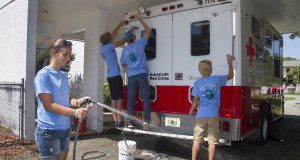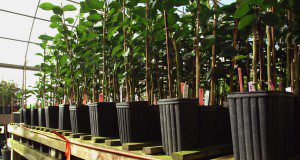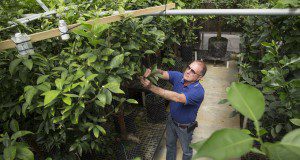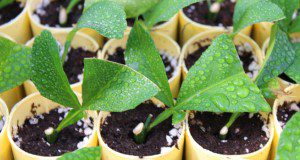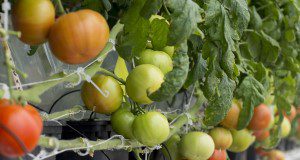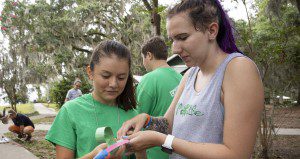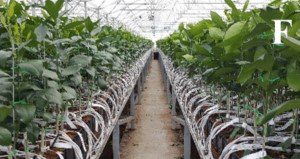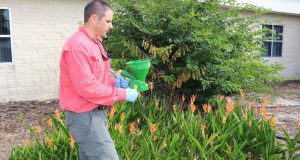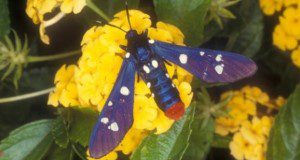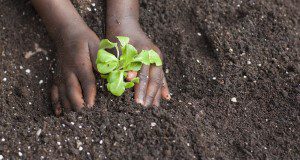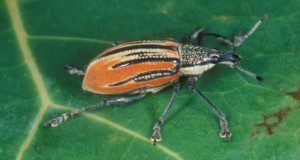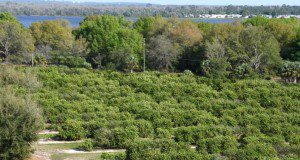The 4-H Citizenship Project offers the opportunity to help 4-H members relate all of their 4-H projects and experiences to the world around them. The 4-H Citizenship manuals will serve as a guide for 4-H Citizenship experiences. To be truly meaningful to the real-life needs and interests of your group, the contribution of volunteer leaders is essential. Each person, neighborhood, and community has individual needs that you can help your group identify. This 23-page major revision of Unit VI covers the “My Government” project. Written by John Rutledge, Joy C. Jordan, and Dale Pracht and published by the UF/IFAS Extension 4-H Youth Development program.
https://edis.ifas.ufl.edu/4h020
Author: Paul Roberts
Exploring Citizenship, Unit V: My Community
The 4-H Citizenship Project offers the opportunity to help 4-H members relate all of their 4-H projects and experiences to the world around them. The 4-H Citizenship manuals will serve as a guide for 4-H Citizenship experiences. To be truly meaningful to the real-life needs and interests of your group, the contribution of volunteer leaders is essential. Each person, neighborhood, and community has individual needs that you can help your group identify. This 22-page major revision of Unit V covers the “My Community” project. Written by John Rutledge, Joy C. Jordan, and Dale Pracht and published by the UF/IFAS Extension 4-H Youth Development program.
https://edis.ifas.ufl.edu/4h018
Exploring Citizenship, Unit IV: My Heritage
The 4-H Citizenship Project offers the opportunity to help 4-H members relate all of their 4-H projects and experiences to the world around them. The 4-H Citizenship manuals will serve as a guide for 4-H Citizenship experiences. To be truly meaningful to the real-life needs and interests of your group, the contribution of volunteer leaders is essential. Each person, neighborhood, and community has individual needs that you can help your group identify. This 14-page major revision of Unit IV covers the heritage project. Written by John Rutledge, Joy C. Jordan, and Dale Pracht and published by the UF/IFAS Extension 4-H Youth Development program.
https://edis.ifas.ufl.edu/4h019
Exploring Citizenship: Volunteer Guide
The 4-H Citizenship Project offers the opportunity to help 4-H members relate all of their 4-H projects and experiences to the world around them. The 4-H Citizenship manuals will serve as a guide for 4-H Citizenship experiences. To be truly meaningful to the real-life needs and interests of your group, the contribution of volunteer leaders is essential. Each person, neighborhood, and community has individual needs that you can help your group identify. This 6-page Volunteer Guide is a major revision written by John Rutledge, Joy C. Jordan, and Dale Pracht and published by the UF/IFAS Extension 4-H Youth Development program.
https://edis.ifas.ufl.edu/4h014
Identification and Management of Clustered Pellitory (Parietaria praetermissa) in Citrus Groves
In Florida, clustered pellitory is becoming a troublesome weed for citrus, especially from the winter through early summer. Inadequate management of this weed can result in its heavy infestation in tree rows and can interrupt the spray pattern of low-volume drip irrigation systems. This new 3-page publication of the UF/IFAS Horticultural Sciences Department will assist Florida citrus growers with proper identification of clustered pellitory and with adoption of adequate and timely strategies to manage this weed in their groves. Written by Ramdas Kanissery, Biwek Gairhe, Brent Sellers, and Steve Futch.
https://edis.ifas.ufl.edu/hs1341
Rootstock Selection
The large number of different rootstock varieties currently available for citrus production in Florida is unprecedented. This new 4-page article, chapter 4 of the forthcoming UF/IFAS Citrus Nursery Production Guide, provides information on rootstock uses in Florida, rootstock propagation, and the impact of tissue culture, as well as factors to consider when deciding which rootstock to plant. Written by Ute Albrecht, Manjul Dutt, and Jude Grosser and published by the UF/IFAS Horticultural Sciences Department.
https://edis.ifas.ufl.edu/hs1340
Seed and Budwood Production, Transport, and Conservation
The Florida citrus industry maintains a high demand for trees for replanting and resetting, as well as an interest in new releases of rootstocks and scions with improved disease and abiotic stress tolerances. One of the main constraints for liner production in great numbers is time. The consensus among citrus nurseries is that it takes two years to produce enough quantities of budwood to establish seed block trees when a new interesting rootstock is produced. This new 3-page article addresses the practices and challenges of producing seeds and budwood in Florida. This article, chapter 7 of the forthcoming Citrus Nursery Production Guide, was written by Fernando Alferez and Mireia Bordas and is a publication of the UF/IFAS Horticultural Sciences Department.
https://edis.ifas.ufl.edu/hs1336
Citrus Rootstock Propagation: Traditional Techniques and Recent Advances
Commercially grown citrus trees are usually composed of two parts: 1) the scion, which is the aboveground portion of the tree that produces the fruit, and 2) the rootstock, which comprises the root system and the lower portion of the trunk. This new 4-page publication, chapter 6 of the forthcoming Citrus Nursery Production Guide, discusses three kinds of rootstock propagation: seed, cuttings, and tissue culture. Written by Ute Albrecht, Lorenzo Rossi, and Mongi Zekri and published by the UF/IFAS Horticultural Sciences Department.
https://edis.ifas.ufl.edu/hs1329
Current Status of Research, Regulations, and Future Challenges for CRISPR Gene Editing in Crop Improvement
Recently, new plant-breeding technology such as CRISPR gene editing has provided the potential to substantially improve crop breeding in agriculture. Considerable efforts have been devoted to apply this gene-editing technology in modern agriculture to increase crop yields and improve the quality of food ingredients, especially by many of the major agronomic seed-producing companies. In this new 4-page article, we outline the recent research updates and regulations on gene editing in crop improvement. Written by Sadikshya Sharma, Heqiang Huo, and Seonghee Lee and published by the UF/IFAS Horticultural Sciences Department.
https://edis.ifas.ufl.edu/hs1334
Florida 4-H Camp Counselor Training Guide
4-H Residential Camp Counselor Training empowers youth ages 14-18 to be positive role models, leaders, and mentors to their campers. This new 38-page guide, written by Jessica Altum Cooper and published by the UF/IFAS Florida 4-H Youth Development program, provides preparation and training modules to help youth reach their full potential as the next generation of community leaders.
http://edis.ifas.ufl.edu/4h398
Preparing for One-on-One Qualitative Interviews: Logistics
This new 4-page publication provides an introduction for researchers and evaluators wishing to use qualitative methods of interviews and focus groups. The document covers a short background on qualitative methods versus quantitative methods and offers practical tips on piloting your questions, preparing your materials, and conducting the interview or focus group. Written by Kathryn A. Stofer and published by the UF/IFAS Department of Agricultural Education and Communication, this EDIS article is designed to accompany AEC675, Preparing for One-on-One Qualitative Interviews: Designing and Conducting the Interview.
https://edis.ifas.ufl.edu/wc339
Preparing for One-on-One Qualitative Interviews: Designing and Conducting the Interview
This new 4-page document provides instructions on designing the question guide and conducting one-on-one interviews for qualitative data collection. It covers common types of interviews and their uses as well as strategies to use when asking the questions of the interviewee. This document is designed to accompany AEC676, Preparing for One-on-One Qualitative Interviews: Logistics. Written by Kathryn A. Stofer and published by the UF/IFAS Department of Agricultural Education and Communication.
https://edis.ifas.ufl.edu/wc338
Stock Plant and Tree Production: Irrigation and Fertilization
Citrus tree production in nurseries can be divided into three stages: production of rootstock liners, transplant of rootstocks into larger containers, and bud grafting. The objectives of this new 6-page publication of the UF/IFAS Horticultural Sciences Department are to provide general information on irrigation and fertilization for production of citrus nursery trees in seedbeds, nurseries and budwood multiplication blocks. This article, written by Rhuanito Soranz Ferrarezi, is chapter 8b of the forthcoming Citrus Nursery Production Guide.
https://edis.ifas.ufl.edu/hs1333
Florida Homeowner Herbicide Guide: Considerations, Applications, and Selection
While some people opt for professional lawn maintenance companies, some homeowners may wish to perform their own landscape pest control in order to save money, to have more control of what is applied, or simply because they enjoy it. This EDIS publication is for Florida gardeners, horticulturalists and homeowners who want to utilize herbicides to control weeds in their landscape. This new 9-page publication of the UF/IFAS Environmental Horticulture Department discusses common herbicides available at retail stores and how homeowners can use these them safely and effectively. Written by Chris Marble.
https://edis.ifas.ufl.edu/ep575
Key Plant, Key Pests: Oleander (Nerium oleander)
This series of Key Plant, Key Pests publications are designed for Florida gardeners, horticulturalists, and landscape professionals to help identify common pests associated with common Florida flora. This new 5-page publication, the tenth in the series, helps identify the most common pests found on oleander. This publication provides information and general management recommendations for oleander aphids, oleander caterpillars, sphaerosis gall, oleander leaf scorch, and scale. Written by Juanita Popenoe, Jacqueline Bourdon, Caroline R. Warwick, and Jianjun Chen, and published by the UF/IFAS Environmental Horticulture Department.
https://edis.ifas.ufl.edu/ep574
Soils and Fertilizers for Master Gardeners: Soil Physical Characteristics
Soils are a foundational component of the landscape, providing a medium for plant root growth and playing a crucial role in nutrient cycling and water movement across the landscape. This new 7-page article describes the physical properties of soils, including soil formation in Florida, the soil profile, and water dynamics within soils, and provides a thorough reference for Master Gardeners and other individuals searching for a basic understanding of soil dynamics to apply to residential landscapes. Written by Amy L. Shober, Alexander J. Reisinger, Mary G. Lusk, and Sally Ann Scalera and published by the UF/IFAS Department of Soil and Water Sciences.
https://edis.ifas.ufl.edu/mg458
Children’s Citrus Activity: Diaprepes Root Weevil
This new two-page children’s activity sheet features pictures of Diaprepes root weevil larva and adults as well as feeding damage. Page two includes a maze. Written by Lauren M. Diepenbrock and Jamie D. Burrow and published by the UF/IFAS Extension 4-H Youth Development program.
http://edis.ifas.ufl.edu/4h403
Children’s Citrus Activity: Citrus Counting
Florida is well known for its citrus industry, valued at over eight billion dollars, and is one of the top citrus-producing states in the United States. This new one-page children’s activity sheet about Florida citrus includes an activity for students learning to count and match. Written by Jamie D. Burrow and Ariel Singerman and published by the UF/IFAS Extension 4-H Youth Development Program.
http://edis.ifas.ufl.edu/4h402
Pesticide Recordkeeping Form for Florida Applicators
This new 5-page document provides a form containing the required elements to include on a record of pesticide application for meeting the restricted use pesticide and Worker Protection Standard (WPS) requirements. An example application record and an explanation of the required elements is provided. This is not a required form because there are other methods to keep records if they contain the required information. Handwritten notes, electronic records, and other recordkeeping software systems are also acceptable. Written by Frederick M. Fishel and published by the UF/IFAS Agronomy Department.
http://edis.ifas.ufl.edu/pi280
Biology and Management of Pusley (Richardia L.) in Tomato, Pepper, Cucurbit, and Strawberry Production
Four species of pusley (Richardia L.) are widespread and common weeds in Florida vegetable and strawberry production. We refer to the native plant Richardia scabra L. as Florida pusley. This discrimination is necessary because these species are often referred to collectively as Florida pusley due to overlapping distributions, similar growth habits and leaf morphologies, and difficulty identifying without the presence of fruit. This new 6-page publication of the UF/IFAS Horticultural Sciences Department describes the different pusley species and provides management options for strawberry, pepper, cucurbits, and tomato. Written by Shaun M. Sharpe, Nathan S. Boyd, Chris Marble, and Shawn Steed.
https://edis.ifas.ufl.edu/hs1331

